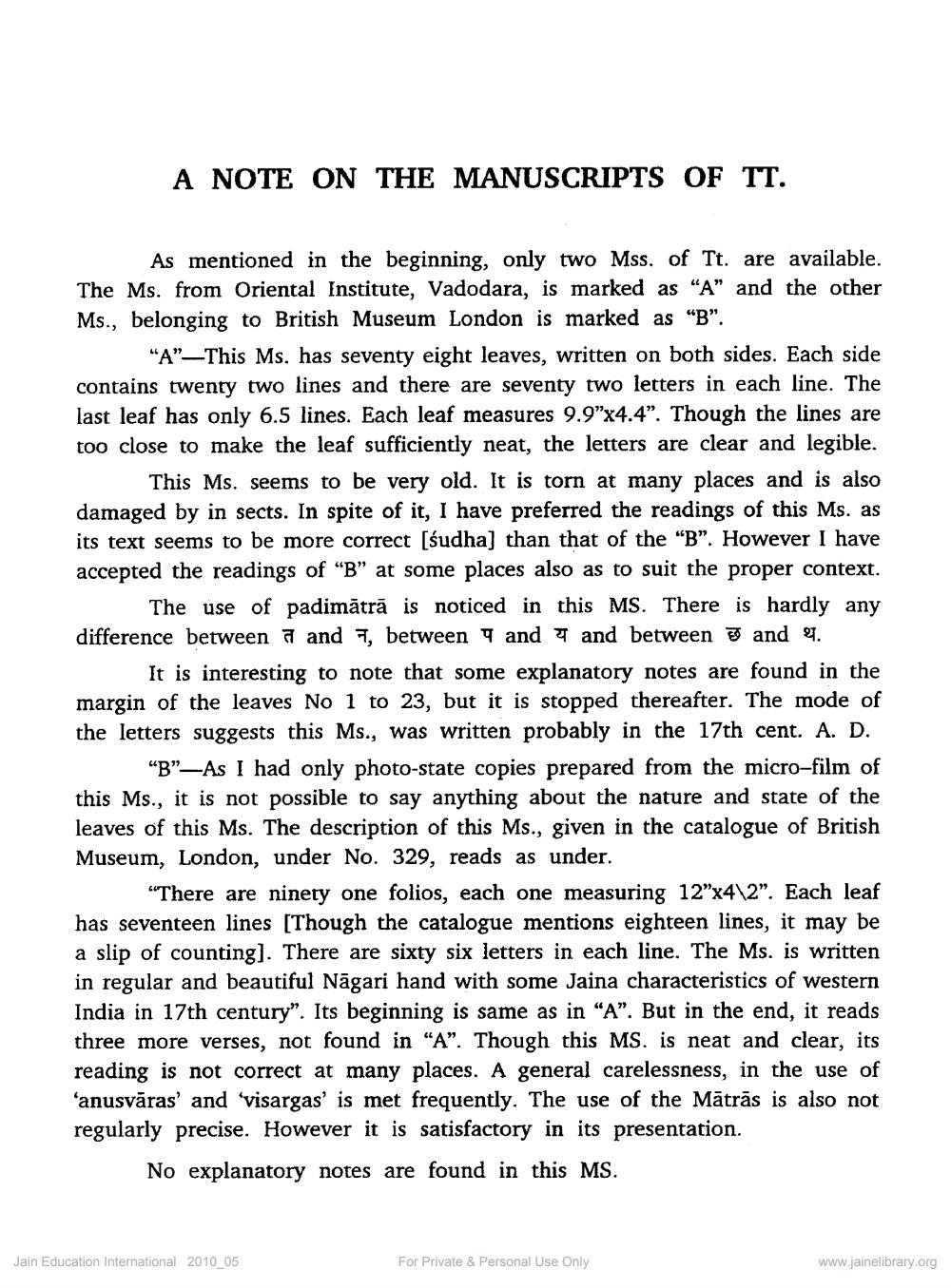________________
A NOTE ON THE MANUSCRIPTS OF TT.
As mentioned in the beginning, only two Mss. of Tt. are available. The Ms. from Oriental Institute, Vadodara, is marked as "A" and the other Ms., belonging to British Museum London is marked as "B".
"A"_This Ms. has seventy eight leaves, written on both sides. Each side contains twenty two lines and there are seventy two letters in each line. The last leaf has only 6.5 lines. Each leaf measures 9.9"x4.4”. Though the lines are too close to make the leaf sufficiently neat, the letters are clear and legible.
This Ms. seems to be very old. It is torn at many places and is also damaged by in sects. In spite of it, I have preferred the readings of this Ms. as its text seems to be more correct [śudha) than that of the “B”. However I have epted the readings of "B" at some places also as to suit the proper context
The use of padimātrā is noticed in this MS. There is hardly any difference between 7 and 7, between 1 and 4 and between 39 and .
It is interesting to note that some explanatory notes are found in the margin of the leaves No 1 to 23, but it is stopped thereafter. The mode of the letters suggests this Ms., was written probably in the 17th cent. A. D.
"B"-As I had only photo-state copies prepared from the micro-film of this Ms., it is not possible to say anything about the nature and state of the leaves of this Ms. The description of this Ms., given in the catalogue of British Museum, London, under No. 329, reads as under.
“There are ninety one folios, each one measuring 12"x4\2”. Each leaf has seventeen lines [Though the catalogue mentions eighteen lines, it may be a slip of counting]. There are sixty six letters in each line. The Ms. is written in regular and beautiful Nāgari hand with some Jaina characteristics of western India in 17th century". Its beginning is same as in “A”. But in the end, it reads three more verses, not found in “A”. Though this MS. is neat and clear, its reading is not correct at many places. A general carelessness, in the use of 'anusvāras' and 'visargas' is met frequently. The use of the Mātrās is also not regularly precise. However it is satisfactory in its presentation.
No explanatory notes are found in this MS.
Jain Education International 2010_05
For Private & Personal Use Only
www.jainelibrary.org




